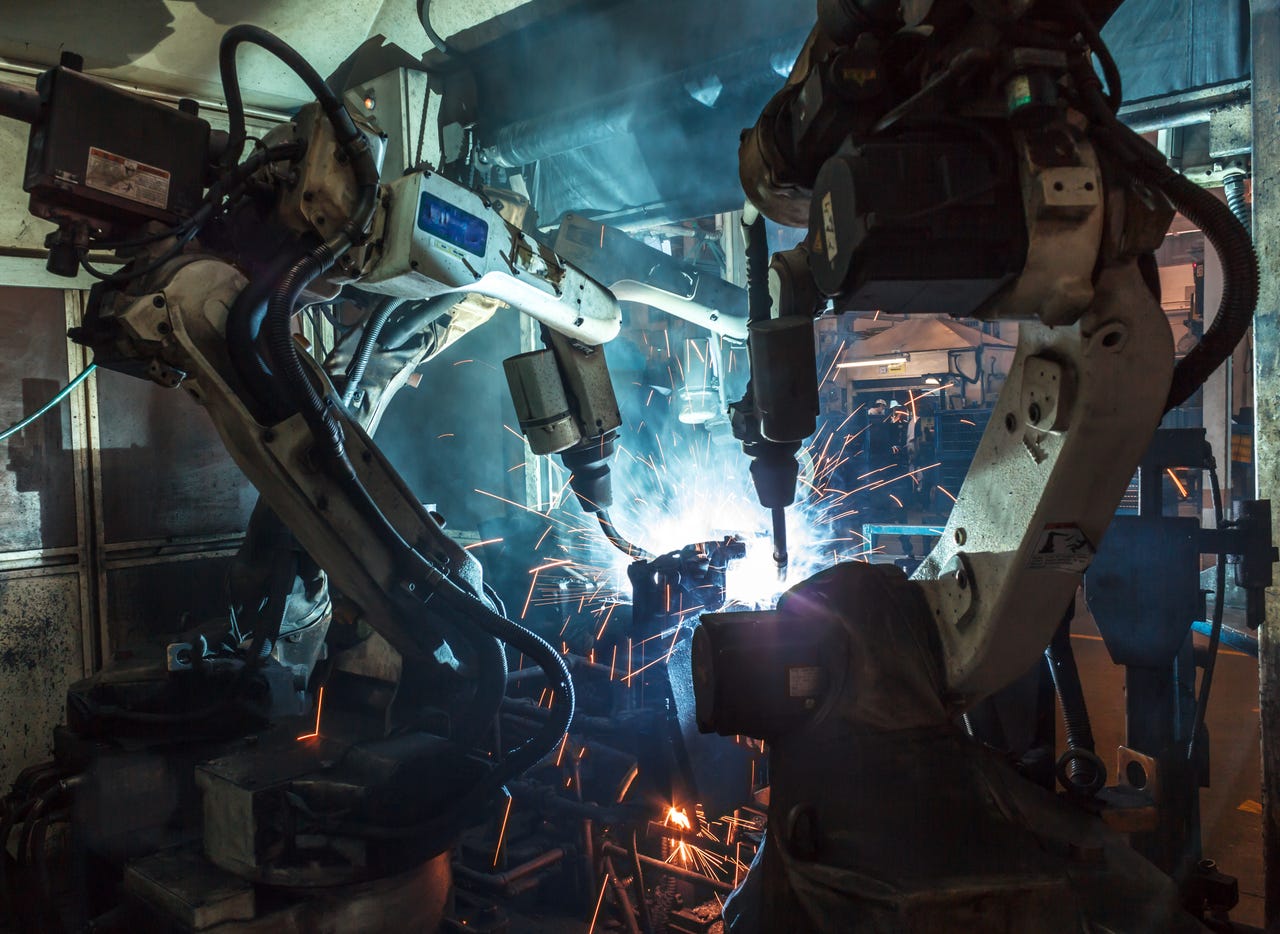Worried that robots will take your job? You should be, as they've already cut your pay


Researchers estimate that the introduction of robots between 1990 and 2007 resulted in the loss of between 360,000 and 670,000 jobs.
A new paper looking at US jobs data and industrial robot usage between 1990 and 2007 paints a bleak picture for the role of humans in tomorrow's economy.
Economics researchers Daron Acemoglu, from the Massachusetts Institute of Technology, and Pascual Restrepo, from Boston University, found "large and robust negative effects of robots on employment and wages" when looking at US employment data over the period.
They attempted to measure the impact robots have had on wages and on employment so far, to see how bad things could get if the most bullish predictions about robot adoption are realized, given today's advances in robotics and artificial intelligence.
The paper notes that today there are about one to 1.5 million industrial robots in use, but the Boston Consulting Group (BCG) has forecast up to a 400 percent rise in the world's stock of robots by 2025, which translates to between four and six million robots.
The key measure the researchers identify is how many jobs will be impacted by each new robot. To derive this figure, they used the greater exposure of certain commuting zones to employers that use robots, allowing the academics to estimate the impact of robots on employment so far.
They found that every additional robot per thousand workers cuts the employment-to-population ratio by 0.18 to 0.34 percentage points and wages by 0.25 to 0.5 percent. So far, their introduction has resulted in the loss of between 360,000 and 670,000 jobs to robots.
"We see that the effects of robots concentrate in manufacturing and especially in heavily-robotized industries, which include automobile manufacturing, electronics, metal products, chemicals, pharmaceuticals, plastic, food, glass and ceramics," they wrote.
They found smaller negative effects in construction, business services, wholesale, and services and retail.
The only sectors that have benefited from industrial robots are "finance, the public sector and non-robotized manufacturing, which includes recycling, basic metals, textiles, paper, furniture, and transportation equipment other than automobiles."
Their measurements also removed effects of imports from China and Mexico, as well as job offshoring.
To date, the effect of robots on employment for men is about 1.5 to two times greater than that for women, according to the analysis.
While the impact of robots so far has been small, they warn they could be much larger effects in future if the deployment of worker robots follows predictions.
For example, if BCG's four-fold forecast of robot adoption is realized, it would mean 5.25 more robots per thousand workers in the US.
"With our estimates, it would lead to a 0.94 to 1.76 percentage point lower employment-to-population ratio and 1.3 to 2.6 percent lower wage growth between 2015 and 2025," they wrote.
Despite bold predictions about the uptake of robots, the researchers also note that the availability of more capable robots does not necessarily mean firms would adopt them. But even this reluctance doesn't bode well for humans.
Whether firms do opt for automation "would depend on the costs of substituting machines for labor and how much wages change in response to this threat".